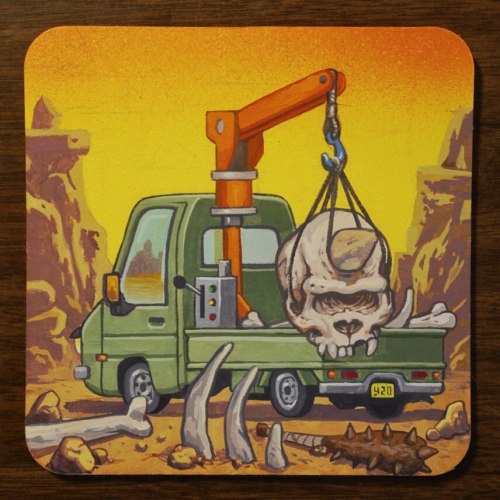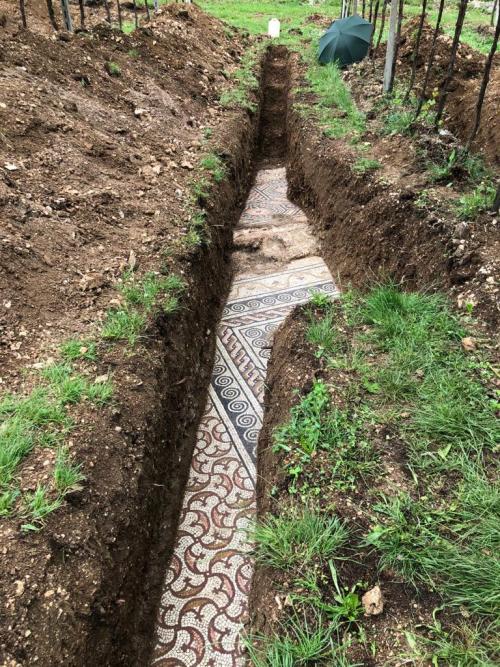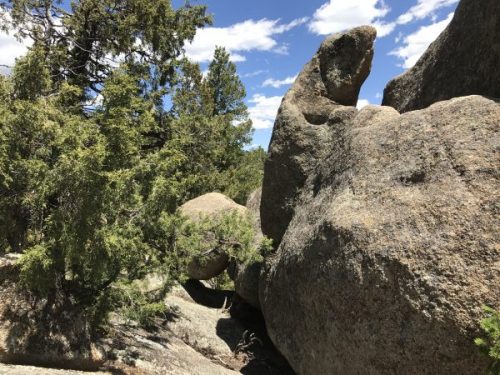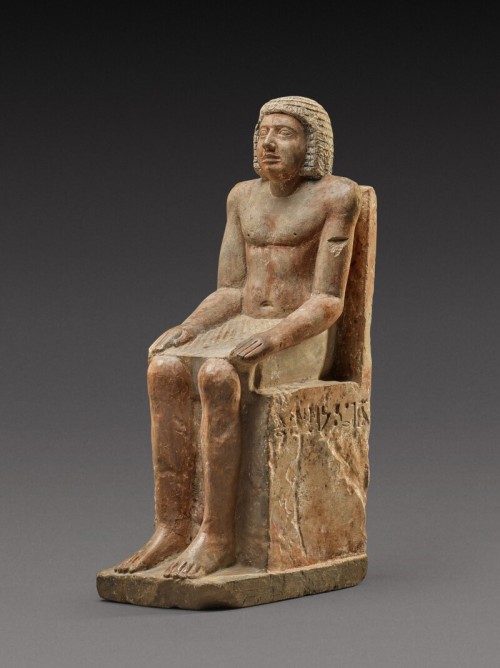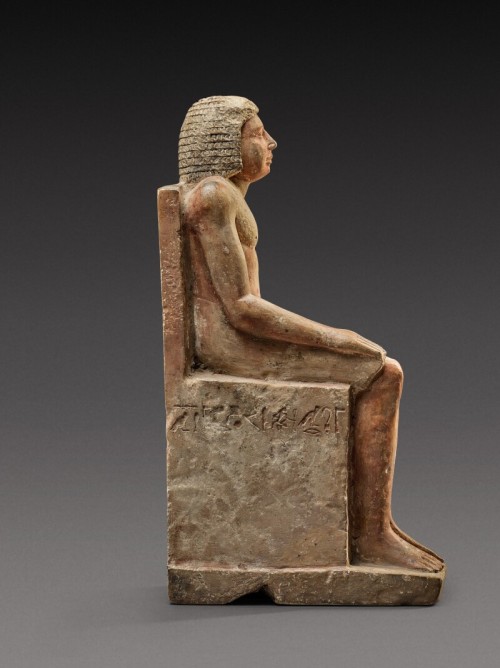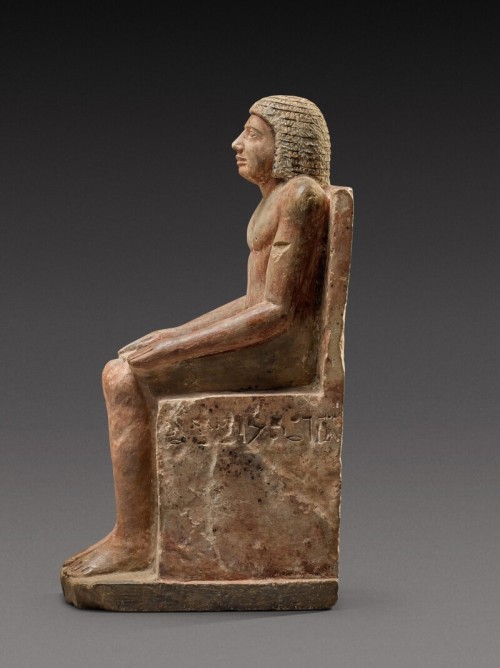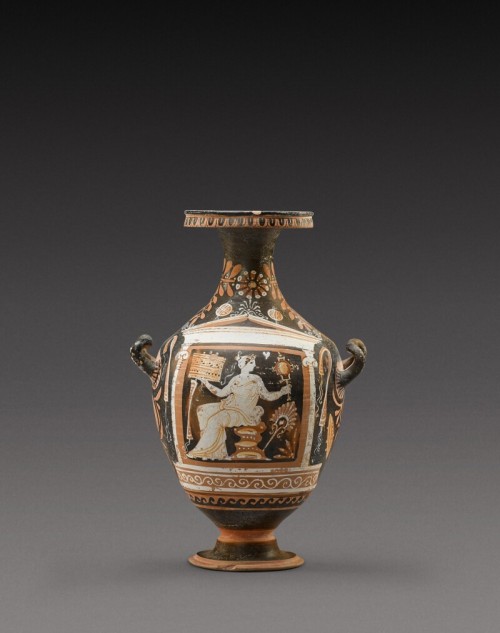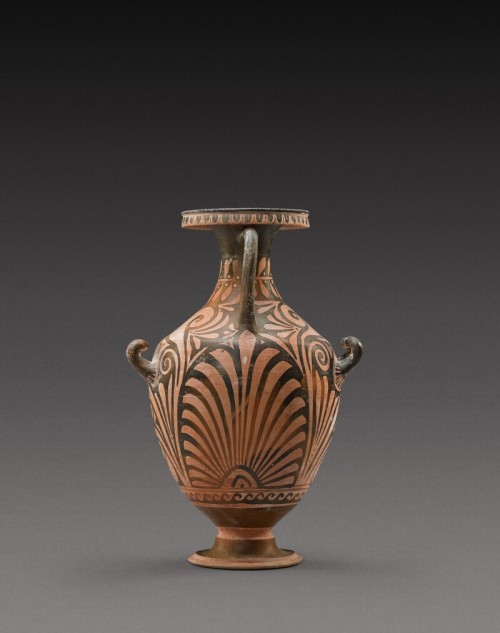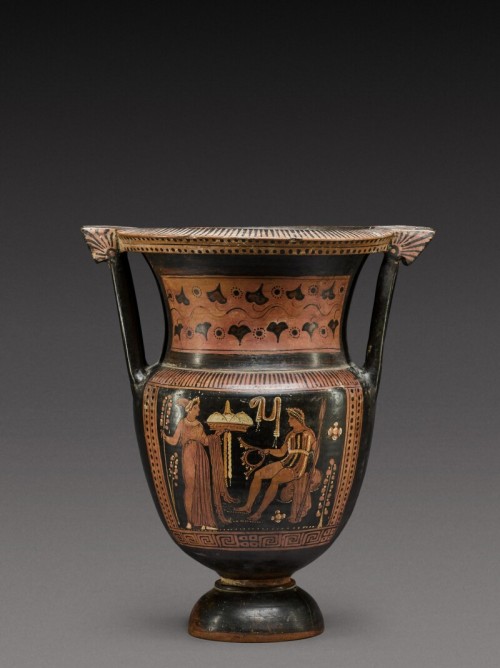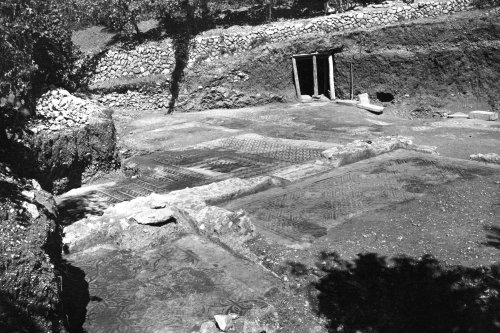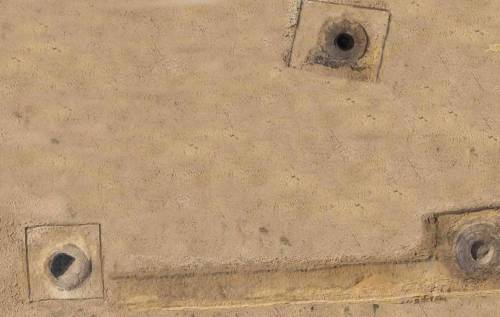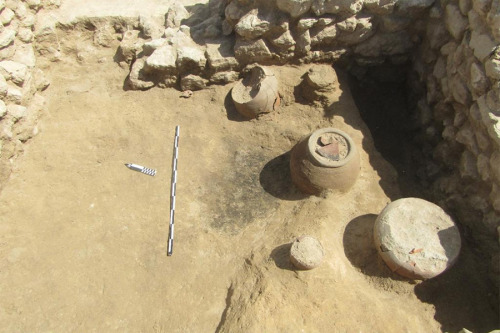#archeology

Glacial archaeologists in Norway have discovered weapons and secret hideaways on a remote mountain where stealthy hunters waited for reindeer more than a millennium ago.
While surveying part of the inland mountain peak Sandgrovskaret, the archaeological team recovered five arrows, three of which are up to 1,700 years old. The researchers also discovered 40 stone-built hunting blinds, which made the hunters “invisible” to nearby reindeer.
“When the reindeer had approached to within 10-20 meters [33 to 66 feet], the hunter would get up and start shooting arrows,” said Lars Pilø, an archaeologist at the Department of Cultural Heritage, Innlandet County Council, Norway, co-director of the Glacier Archaeology Program and the editor of the Secrets of the Ice website. Read more.

The wreck of the steam-yacht Endurance, which famously sank in 1915 during an Antarctic expedition by the polar explorer Ernest Shackleton, has been rediscovered by searchers using autonomous underwater vehicles.
The shipwreck was found at a depth of 9,869 feet (3,008 meters) beneath West Antarctica’s Weddell Sea, according to the Falklands Maritime Heritage Trust (FMHT), which sponsored the search.
That’s only about 4 nautical miles (7 km) south of the location fixed by the ship’s captain, Frank Worsley, who used a sextant to record the position of its sinking after several months of the ship being surrounded and eventually crushed by ice. Read more.

Archaeologists have uncovered a Pictish symbol stone close to the location of one of the most significant carved stone monuments ever uncovered in Scotland.
The team from the University of Aberdeen hit upon the 1.7 meter-long stone in a farmer’s field while conducting geophysical surveys to try and build a greater understanding of the important Pictish landscape of Aberlemno, near Forfar.
Aberlemno is already well known for its Pictish heritage thanks to its collection of unique Pictish standing stones the most famous of which is a cross-slab thought to depict scenes from a battle of vital importance to the creation of what would become Scotland—the Battle of Nechtansmere. Read more.

Excavators in Hungary have discovered a “very rare” gold Roman coin that features the face of a murdered Roman emperor.
The third-century coin depicts Emperor Volusianus, who co-ruled the Roman Empire for about two years with his father, until the emperor was assassinated at age 22 by his own soldiers. Because of Volusianus’ short reign, coins bearing his face are rare. What’s more, the coin’s denomination is rare, as is finding gold coins from the Roman period in Hungary, said Máté Varga, an archaeologist at the University of Szeged in Hungary and head of the excavation.
Despite their luck in finding this rare treasure, however, the excavators have no idea who owned the currency. But because it was the only gold coin unearthed at the site, “it is likely a stray that someone lost,” Varga told Live Science in an email. “It must have been a great loss for the former owner to lose this valuable coin.” Read more.

The almost 11-cm-high Venus figurine from Willendorf (Austria) is one of the most important examples of early art in Europe. It is made of a rock called oolite that is not found in or around Willendorf. A research team led by the anthropologist Gerhard Weber from the University of Vienna and the two geologists Alexander Lukeneder and Mathias Harzhauser as well as the prehistorian Walpurga Antl-Weiser from the Natural History Museum Vienna have now found out with the help of high-resolution tomographic images that the material from which the Venus was carved likely comes from northern Italy.
This sheds new light on the remarkable mobility of the first modern humans south and north of the Alps. The results currently appear in Scientific Reports.Read more.
Excavating a Cyclops. Another coaster for the Salut6! Show at @nucleusportland on June 13.
.
.
.
.
#salut6 #coasterart #nucleusportland #keitruck #suburusambar #archeology #cyclops #rayharryhausen #minitruck #acrylagouache #airbrush #painting #illustration #artshow (at Oakland, California)
https://www.instagram.com/p/CPynfKJjWu4/?utm_medium=tumblr
Post link
Archaeologist / Egyptologist Dr. Anna Stevens talks about the bust of Nefertiti.
—Lost Treasures of Egypt: Hunt for Queen Nefertiti (S2E05) (2020)
Post link
Roman mosaic floor discovered under a vineyard in Negrar di Valpolicella, Veneto.
#something about this really gets to me #how if you get enough dirt on your floor it just becomes the ground #and eventually someone is trying to farm in your living room
Post link
The world has always been asking, “who built the great pyramids of Egypt.” Most people believe it was the Egyptians, however, there is some debate on when the actual pyramids were built. Some archaeologists say after carbon dating it seems to be around 7,000-10,000 years ago. However, other debate this and say that they are only a few thousand years old and Egyptians only came around about 3,000 years ago, so it couldn’t be older then that.What if the Egyptians did build some of the smaller ones, but not the great pyramid. What if they found it and decided to use them and construct more. Which then confused scientists after so many years. This might be why we see three great large pyramids next to three small ones which don’t seem as magnificent next to the great ones. So the question is… who built them first? Before the skeptics begin to roll their eyes, lets look into history. In Genesis it is said that the Giants (Nephilim) are ”sons of God” and the “daughters of men.” The most memorial story of course is the Giant Goliath who fights David. Also found in Egypt are drawings of smaller humans fighting against larger humans. Almost every culture has names or drawings of Giants from different eras in history.
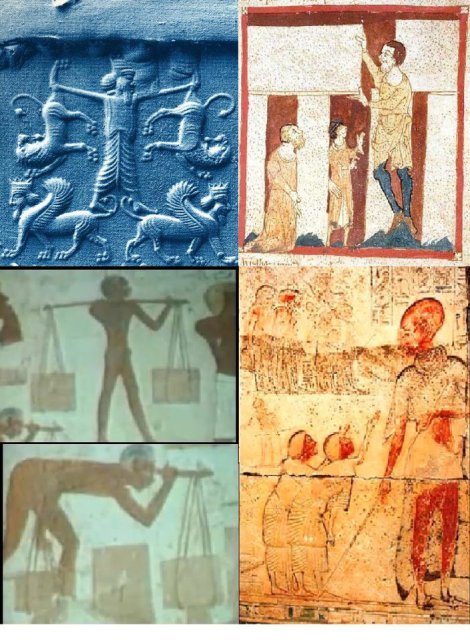
Here is a comment from user tollan23 who is an actual archaeologist:“I’m an archaeologist (who has worked at the pyramids) and I have to admit that we’re all admitted into a secret society where we’re told to hide the secrets of the giants from all, under threat of death. Now that I have let you all know the truth my life is in danger. At least the truth is out there now but I will live the rest of my life in hiding.”On his youtube account he has a number of archaeology videos at the site of Bu Maher Fort, Bahrain.Gery Nelson has a wonderful and great article on this subject with references and pictures. In his article Nelson says:“I have tried to keep this within the realm of my own experiences.
There is so much more to this. Like the 64 pound sledge hammer found in a 3500 year old copper mine near the town of Llandudno in North Wales. Giant axes unearthed in Iran, Giant swords, etc.You could read for weeks on the subject of giants and if your mind is anything like mine enjoy every minute of it. I would suggest googeling Solomon Island giants, red haired giants, Arizona giants, California giants, Ohio giants, Peruvian giants.”A few years ago I would have never believed that Giant built the pyramids, thought it was absurd. However, in recent years I have found that the actual truth, maybe stranger then fiction.According to Author Brad Steiger, who has written over 168 books with over 17 million copies in print. He says in his book “World’s Before Our Own,”“There have been excavations in the United States that have produced the remains of primitive men and women over seven feet tall; hominids with horns; giants with double rows of teeth; prehistoric people with sharply slanting foreheads and fanged jaws…In July 1895, a party of miners working near Bridal Veil Falls, California, found the tomb of woman whose skeletal remains were six-feet-eight inches in length.”So what happen to these giants? Why don’t we see anymore today? One theory could be that they died during the great flood, caught diseases or even mated with normal humans, which could explain gigantism syndrome.
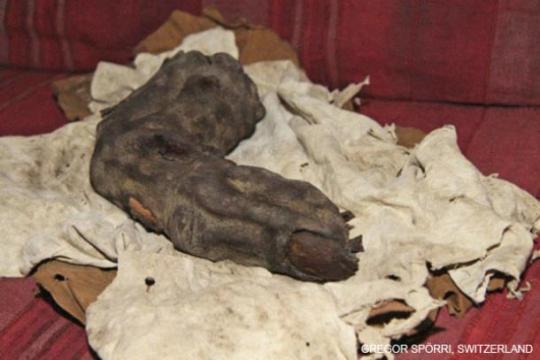
The 15 in. long finger which would make the owner about 15 feet tall. Photo by Gregor Spörri from 1988.
Also just recently published, but taken in 1988 on the German website BILD.De, are photos taken by Gregor Spörri. Translated from the article is reads:“In 1988, on the last day of his private investigation trip, he contacted an old man from a grave robber dynasty. The meeting was took place in a farm-house in Bir Hooker, 100 kilometers northeast of Cairo.After paying, $ 300 Spörri had a look at the grave robber unsold treasure. Wrapped in old rags was the bone and dermis.Spörri told BILD.de: “It was an oblong package, smelled musty. I was totally flabbergasted when I saw the dark brown giant finger.I was allowed to take it in hand and also to take pictures; a bill was put next to it to get a size comparison. “The bent finger was split open and covered with dried mold.”It was surprisingly easy, maybe a few hundred grams My heart was up to his neck. That was incredible. In size to a matching body should have been about 15 feet tall”The grave robber also showed the Swiss certificate of authenticity and an X-ray image. Both are from the 60s.”

The question is, why would Governments around the world hide this from the people? To answer this question I turn to Darwin, which takes you to a dead end if you follow this path. Right now scientists are trying to make the world believe we descended from apes, however, Giants were never part of that theory. Add Giants to the mix and what is of Darwin? If the world knew Giants existed and built the pyramids, (which would explain how huge heavy stones were transported 100′s of miles away. And would also display who actually built Stonehenge) then all kinds of questions would arise, like: Where did they come from? Did we descend from Giants? Does Darwin’s actually stand for anything? Have we been here for actually millions of years but not know? What else did they build? Stonehenge? Easter Island? Were they part of Atlantis?The human mind would become so curious that we would then be asking the Governments of the world: “What else are you hiding from us?
Could this be a prehistoric petrified lizard or some amphibian in the Colorado Rocky Mountains?..
Many rocks in the same area show signs of being a post-organic material too:




Post link
An Egyptian Polychrome Limestone Figure of Hem-Min
6th Dynasty, 2360-2195 B.C.
Inscribed “Treasurer of the God, Overseer of the Army, Overseer of the Prospectors, revered with the God,” seated on a high-backed chair inscribed on both sides with his names and titles, his hands resting on his knees, and wearing a short pleated kilt and wig of layered trapezoidal curls, his face with prominent chin, outlined lips, and slightly aquiline nose; remains of red pigment on the body and black pigment on the wig.
Height 48.3 cm.
Post link
An Apulian Red-figured Hydria
Circa 350-330 B.C.
Painted with a woman seated within a naiskos and holding a mirror and a casket, the details in added white and yellow.
Height 43 cm.
Sold: 5,040 GBP 12/2020
Post link
An Apulian Red-figured Column Krater, attributed to the Painter of the Truro Pelike.
Circa 350-330 B.C.
Painted in front with a standing woman and a seated youth, and on the back with two youths flanking a plant, the details in added white and yellow.
Height 44.2 cm.
Sold: 6,930 GBP 12/2020
Post link
Sixth-Century A.D. Mosaic Unearthed in Italy
A section of mosaic flooring from the 5th century palace of Ostrogoth king Theodoric has been discovered in Verona. The mosaic was found during installation of new gas pipes in the Montorio hamlet less than four miles from Verona’s historic town center.
Remains of an enormous country villa more than five acres in surface area have been turning up in Montorio since the 19th century. While there is no direct evidence that it was one Theodoric’s many palaces, the sheer size and scale strongly suggests it was a royal estate. If it wasn’t Theodoric’s palace, it must have belonged to someone of enormous wealth who was very close to him.
Theodoric was not technically a Roman emperor. He was three different varieties of king, though, starting in 475 A.D. as King of the Ostrogoths, then adding King of Italy in 493 and of the Visigoths in 511. By the time of his death in 526, Theodoric reigned over most of what had been the Western Roman Empire. He spent his childhood as a noble hostage at the imperial court in Constantinople and was educated there in the Eastern Roman tradition.
As ruler of a territory stretching from the Atlantic to the Danube, Theodoric embraced the ancient imperial trappings. He donned the purple, accepted the regalia of the Western Empire from Eastern Emperor Anastasius I Dicorus and allowed all Roman citizens in the kingdom to be governed by Roman judicial law. He instituted a vast program of reconstruction of Roman cities and infrastructure, restoring ancient aqueducts, baths, churches, the Aurelian walls of Rome and the defensive walls of a myriad other cities in Italy. He threw in a few new palaces for himself while he was at it, most famously in his capital of Ravenna, but also in other northern Italian cities like Verona.
The mosaic will remain in situ. It will be cleaned and documented in detail before being reburied. Some local residents have proposed covering it with plexiglass so the mosaic can still be seen, something that has been done already in Verona’s historic center, but this mosaic is in a terribly awkward position, trapped under networks of old pipes surrounded by homes, so it’s not a good candidate for display, unfortunately.
Post link
A Rare Shiva Linga Found in India
A group of workers laying the foundation for a house on a piece of land owned by a dairy farmer in Thuthipattu village near Ambur in Tirupattur unearthed a 500-year-old shiva linga.
A lingam sometimes referred to as linga or Shiva linga, is an abstract or aniconic representation of the Hindu god Shiva in Shaivism.
A team of officials from the Government Museum, Vellore, led by curator K. Saravanan, inspected the linga on Saturday and traced its origin to the later Vijayanagara era in the 16th Century. “We found a similar green stone lingam on a house plot at Arani [in Tiruvannamalai district] a decade-and-a-half ago,” Mr. Saravanan said.
To build a small concrete house for farmer S. Ramesh, workers were deepening a portion of the land to lay the foundation when one of them struck a stone idol at a depth of seven feet. Workers alerted the landlord, who informed the police and the village administrative officer.
The workers lifted the stone idol with a mechanised crane in the presence of revenue officials and the police. The shiva linga, which is two feet tall and 1.5 feet wide, has no damage to its structure.
Officials said that under the Indian Treasure Trove Act, 1878, anything found below a one-foot depth belongs to the government. Such treasure should be handed over to the district treasury, with the Collector being the sole guardian.
In this case, a report from the Government Museum, Vellore, will be sent to the Director of Museums, Chennai, and the Tirupattur Collector. Museum officials said the Collector would be requested to display the linga at Vellore Museum for students and others learn the rich past of the region.
The shiva linga, archaeologists said, would be around 500 years old and belonged to the Vijayanagara era because it was during that period, the region witnessed more temple constructions. Furthermore, most of the sculptures and idols in the region, including idols that adore the Jalakanteshwara temple, an ASI- protected monument in Vellore, belong to this period, and are made of green stones found in abundance along the Jawadhu Hills in Tiruvannamalai.
Like Sriperumbudur (the birthplace of Saint Ramanuja), the region along the Palar was a great centre for both Vaishnavites and Shaivaites. The green stone linga found near Ambur is a detachable one, another feature of the era. With the finding of the linga, the area has been earmarked for excavation, officials said.
Post link
Egypt Announces Discovery of Five Ancient Water Wells in North Sinai
An Egyptian archaeological mission working in the Tell El Kedwa region of North Sinai has discovered five water wells believed to be from the 13th century BC.
The Egyptian Antiquities Ministry said that wells were built before the reign of Seti I (1292-1190BC), but it did not give an exact date.
They are believed to have been a part of the expansive Horus Military Road, an ancient route that was used by pharaohs, the ministry said.
The wells were found outside the walls of the Tell El Kedwa fortress, one of several massive strongholds found in the area, which were used as military control points to protect Egypt’s eastern frontier and guard access to its northern regions.
The mission’s leader, Ramadan Helmy, said that four of the discovered wells were reportedly filled with sand to prevent the Persian army, which invaded Egypt in 525BC, from obtaining water.
The fifth well, which was unfilled, was a little more than three metres deep, the ministry’s said.
Inside it, the mission found 13 pottery rings and several clay pots dating back to the 26th dynasty of ancient Egypt (664–525BC), also known as the Saite period.
The fifth well was built in a haphazard manner, which was incongruent with the style of that period, Mr Helmy said.
The ministry said the mission’s excavations were part of a larger national project to develop the province of North Sinai, which contains prominent pharaonic sites that will soon be open to tourists.
Another archaeological team operating at the nearby Tell El Kedwa fortress discovered a large storage centre dating to the Saite period.
Inside the large chamber, the mission found a pile of clay pots. And within the walls of the fortress, the mission found the remains of kilns, also from the Saite period.
The kilns are were part of a large copper-smelting workshop, the ministry’s said. Copper shards were also found near the kilns.
The Horus Military Route was used during the old, middle and new kingdoms of ancient Egypt and was depicted in inscriptions at some of Egypt’s other prominent archaeological sites, including Luxor’s Karnak Temple.
At its peak, the route measured 220 kilometres and connected Egypt to Palestine.
By Kamal Tabikha.
Post link
Ancient Greek Pottery Workshop and Storage Facility Discovered in Alexandria
An Egyptian archaeological mission uncovered an Ancient Greek pottery workshop and a storage building at Tabet Al-Motaweh area to the west of Alexandria.
Mostafa Waziri, secretary-general of the Supreme Council of Antiquities, said a collection of kilns were discovered in the workshop, including two engraved in rocks, according to Ahram.
The first has a vaulted entrance through which workers passed to line up amphora in rows. The entrance is covered with clay and fragments.
Studies revealed the workshop was used throughout different periods. The northern side was used as a kiln for cement during the Byzantine time.
It was completely destroyed during the Middle Ages and converted into a cemetery. Inside one of the kilns a burial for a pregnant woman was uncovered.
Ayman Ashmawi, head of the Ancient Egyptian Antiquities Sector, said a storage was also unearthed containing a large collection of clay pots used for cooking.
The storage building comprised dorms for workers during the Ptolemaic era. It has 13 chambers, including one for religious rituals and prayers, another used as a kitchen, and a third for selling pots.
Inside the cooking pots bones of cattle and fish were found.
A large collection of Ptolemaic coins bearing the faces of Alexander the Great, deity Zeus and Queen Cleopatra were found on the floor of one of the chambers, while two large terracotta statues for deity Harpocrates and a yet unknown king in a very bad conservation condition were discovered in another chamber.
Hunting hooks and deity statues were found along with 100 catacombs.
Post link


~ Figure of a Standing Warrior.
Culture: Maya
Place of origin: Yucatán, Península de
Date: A.D. 650–800
Medium: Ceramic with pigment




~ Snake ring.
Place of origin: Egypt
Culture: Hellenistic
Date: 200-1 B.C.


